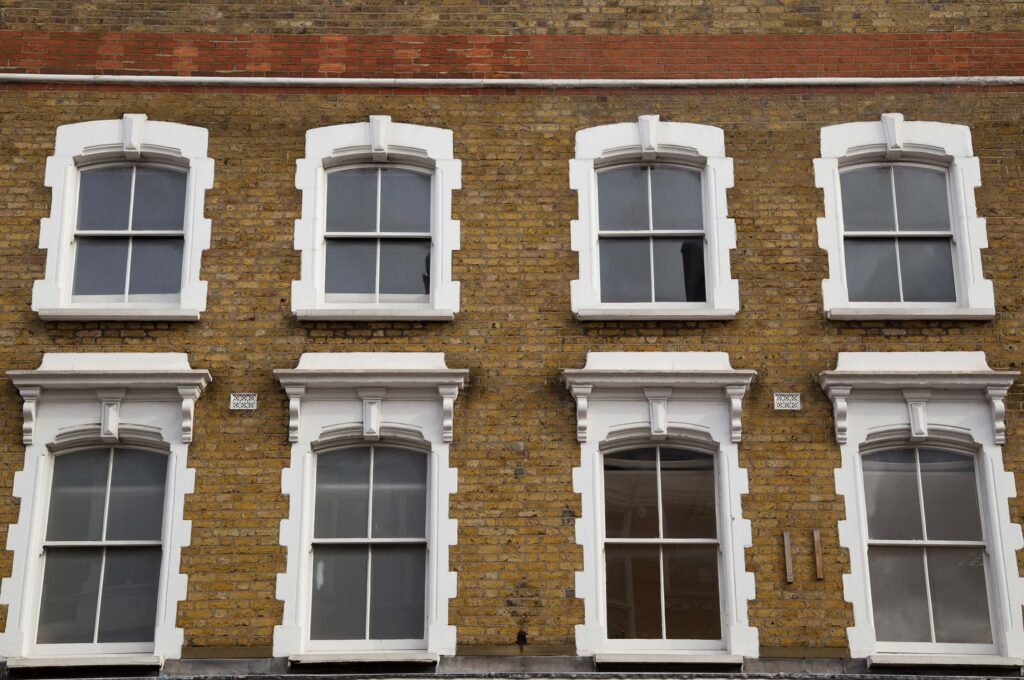HMOs are popular investments for landlords and offer many benefits.
However, they are more complex than standard buy-to-lets, with strict compliance rules.
In this guide, we’ll explain everything you need to know about HMOs, including what they are, how they work and the pros and cons you’ll need to consider…
What does HMO mean in property?
HMO stands for House in Multiple Occupation.
HMOs are properties with multiple bedrooms that are shared by several individual tenants.
As well as privately rented houses and flats, HMOs can also be:
- Hostels
- Multiple bedsits
- A block of converted flats
- Cluster flats
What is HMO property?
Any property that is home to three or more tenants from more than one household and share toilet and kitchen facilities is classed as an HMO.
Depending on the number of individual tenants, an HMO will be classed as either a ‘small’ or ‘large’ HMO – and this classification can affect rules on licensing and planning permission
You should always clarify the status of your property with your local planning office, as rules can differ.
Are HMOs good investments?
HMOs can make excellent investments for landlords.
This is because of the multiple streams of income that come from several tenants renting rooms individually.
However, HMOs can cost more to run, with rooms often rented on a ‘bills included’ basis, while properties with a larger number of tenants can mean increased wear and tear and potential effects on neighbours.
What are the regulations for HMOs?
HMOs are subject to the same regulations as standard buy-to-lets, plus a whole lot more.
So, when renting out an HMO, you’ll need to comply with all standard letting regulations, but also increased fire and safety regulations as well specific rules set by your local authority.
As well as those the usual compliance requirements, HMOs also come with their own set of regulations:
1. HMO licensing
Whether or not your HMO needs a licence depends on:
- The size of the property
- The licensing requirements of the local authority
Any HMO with five or more individual tenants requires a mandatory licence.
And while a smaller HMO of fewer than five tenants won’t require a mandatory licence, it may require a licence under additional licensing if this has been put in place by the local authority.
2. HMO planning permission
HMOs with seven or more tenants always require planning permission and fall under the sui generis planning class.
An HMO with three to six people, however, falls within the C4 planning class and may not require planning permission.
However, if the local authority has an article 4 direction in place restricting permitted development rights, all HMOs, regardless of size, will require planning approval.
3. HMO health and safety
As well as complying with all the health and safety regulations that apply to any rented property, if you’re renting out an HMO you must:
- Ensure the property isn’t overcrowded
- Provide enough cooking and bathroom facilities for the number of tenants
- Provide an adequate number of bins for waste
- Ensure communal areas are safe and in good repair
4. Minimum room sizes and occupancy
HMOs must also follow rules on minimum rooms sizes and room occupancy, so overcrowding is prevented:
- No more than two people can sleep in any room
- Rooms may only be shared by individuals if consent is in place
- No tenant aged over 12 should share a room unless they are co-habiting as a couple
Any bedrooms in an HMO must also be:
- Not less than 6.51 square metres if the occupant is aged over 10
- Not less than 10.22 square metres if two people aged over 10 are co-habiting
- Not less than 4.64 square metres if the occupant is aged under 10
Any rooms smaller than 4.64 square metres, meanwhile, cannot be used as a bedroom.
HMO investment: The pros and cons
Like most property investments, HMOs come with a range of pros and cons you’ll need to consider:
| HMO pros | HMO cons |
| Higher rental yields | Limited finance options for conversions |
| Lots of demand | Tighter legislation |
| Fewer costly void periods | More up-front cost |
HMO mortgages and insurance
If you’re buying an existing HMO with a mortgage, you’ll need an HMO-specific loan which allows the renting of rooms to individual tenants.
However, if you need finance to fund an HMO conversion, an HMO-specific mortgage may not be available until the property is classed as such.
For development funding, you could consider:
- Development loans
- Bridging finance
- Refurbishment loans
How to manage an HMO
HMOs can be more demanding to manage compared with standard buy-to-lets.
With multiple individual tenants and sometimes a higher tenant turnover, there are more check-in and check-out processes to go through, as well as more marketing to find the right tenants to replace those who move out.
With more people living in HMOs, these properties often require more maintenance, too.
So, the best way to manage an HMO is through a letting agent, who will be able to ensure you’re fully compliant, look after the day-to-day running of the property and communicate with those individual tenants.
Further reading…
What does landlord insurance cover?




